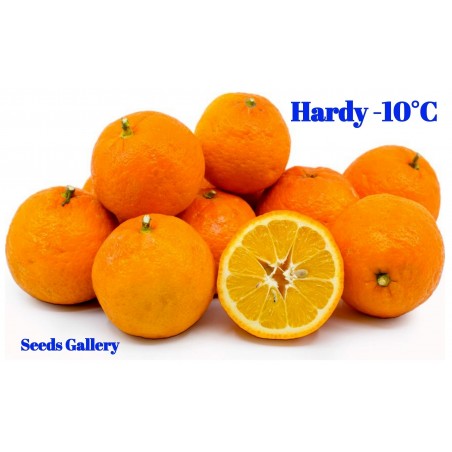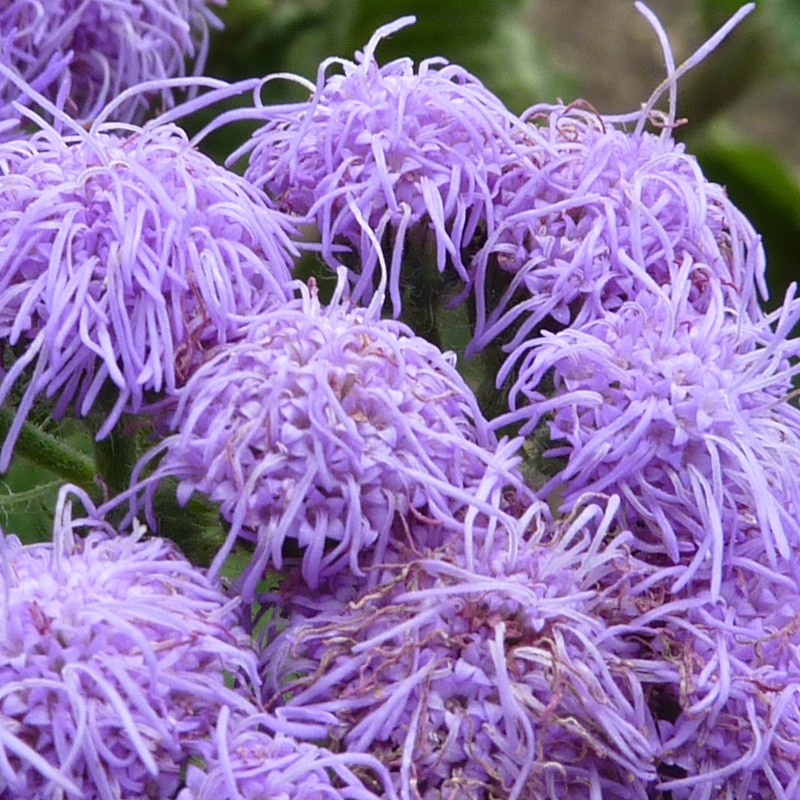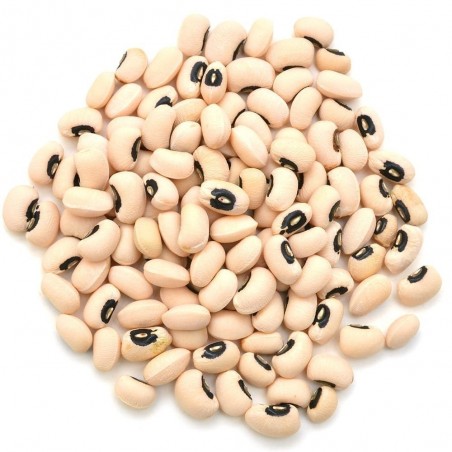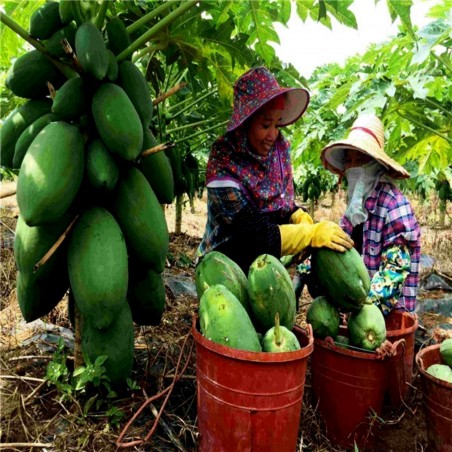
Flossflower Seeds (Ageratum houstonianum)
Flossflower Seeds (Ageratum houstonianum)
Price for Package of 2000+ seeds (0,3g).
Ageratum houstonianum, commonly known as flossflower, bluemink, blueweed, pussy foot or Mexican paintbrush, is a cool-season annual plant often grown as bedding in gardens.
Flossflower Seeds (Ageratum houstonianum)
Price for Package of 2000+ seeds (0,3g).
Ageratum houstonianum, commonly known as flossflower, bluemink, blueweed, pussy foot or Mexican paintbrush, is a cool-season annual plant often grown as bedding in gardens.
The ordinary Ageratum is a perennial, herbaceous plant or a dwarf, or shrub. The plant grows to 0.3–1 m high, with ovate to triangular leaves 2–7 cm long, and blue flowerheads (sometimes white, pink, or purple). The flower heads are borne in dense corymbs. The ray flowers are threadlike and fluff-haired, leading to the common name. The narrow lanceolate bracts are pointed, denticulate only at the top and glandular hairy. The flowering period is from May to November in the northern hemisphere.
Range
The plant is native to Central America in Guatemala and Belize, and adjacent parts of Mexico, but has become an invasive weed in other areas. It was also naturalized in large parts of the tropics and in the southern United States. Their habitat is pastures, moist forest clearings and bushes up to altitudes of 1000 meters.
Today, it is widely used as an ornamental plant for summer borders and balcony boxes, high varieties also as cut flowers. The species is cultivated once a year, having numerous varieties whose crowns may be dark blue, purple, pink and white. Preferring cool soils and exposure in full sun, high varieties reach stature heights up to 60 centimetres.
Chemistry
Ageratum has evolved a unique method of protecting itself from insects: it produces a methoprene-like compound which interferes with the normal function of the corpus allatum, the organ responsible for secreting juvenile hormone during insect growth and development. This chemical triggers the next molting cycle to prematurely develop adult structures, and can render most insects sterile if ingested in large enough quantities.
Toxicity
Ageratum houstonianum is toxic to grazing animals, causing liver lesions. It contains pyrrolizidine alkaloids.
Weed risk
Ageratum houstonianum is prone to becoming a rampant environmental weed when grown outside of its natural range. It has become an invasive weed in the United States, Australia, Europe, Africa, China, Japan, New Zealand, and the Philippines.
Germination 10-14 days at 72 to 75ºF (22 to 24ºC).
Keep media moist and near saturation by watering before placement of seed.
Press the seed lightly in soil and cover lightly, as the seed does not need light for germination.
Once seedlings emerge grow on with less moisture in cooler conditions.
Transplant to trays when large enough to handle and grow on in cooler conditions.
Gradually acclimatise outside when all danger of frost has passed.
This species does not appreciate feeding until mature and flowering.


Your review appreciation cannot be sent
Report comment
Report sent
Your report cannot be sent
Write your review
Review sent
Your review cannot be sent
🌍 Worldwide Shipping from the EU
We ship worldwide from the European Union using registered air post with signature confirmation on delivery.
📦 Tracking Your Order
Log in to your account and go to Order History > Details to find your tracking number.
You will receive email notifications at every step — please check your spam/junk folder if you don’t see them.
Track your package via:
⚠️ Important Notices
Cash on delivery is not available.
Always provide a valid mobile number with country code when ordering (e.g., +365 456 7686 576).
Do not order to P.O. Boxes or if you cannot be home to sign for the package. We cannot leave parcels with neighbors.
If a package sent to a P.O. Box is lost or undelivered, you lose the right to a refund.
📦 Lost, Returned & Reshipping Packages
For customers in Brazil and Mexico:
We cannot refund packages lost or destroyed by customs.
If your package is returned, we will refund only the product cost — shipping costs are not refundable.
You must pay return postage (€2) and any costs for reshipping.
If a package is returned to us for any reason, you are responsible for paying the return shipping (€2) plus the cost to resend the package.
🚚 Shipment Delivery
Registered shipments require a signature from the recipient.
If your tracking shows the package is still at the origin post office, it means the package is in transit — please contact your local post office directly for updates.
We are not responsible for delivery times and cannot track shipments for you.
📅 Delivery Options & Estimated Times
Delivery Option Processing Time Notes Priority Delivery Ships in 1-7 business days Prioritizes order processing (not guaranteed faster delivery); delays possible during holidays (3-10 days) Secured Delivery Ships in 1-7 business days Available for orders up to €150; refund if lost Standard Delivery Ships in 7-10 business days More economical; delays possible during holidays (7-14 days) Estimated Delivery Time:
Within the EU: 3–20 days
Worldwide: 5–30 days
Example delivery times to the USA:
Delivered in 13, 17, 19, 22, or 27 days.Note: Delivery times depend on your location and the local postal system. COVID-19 may cause additional delays.
💰 Shipping Costs
Shipping and handling fees are calculated automatically during checkout based on the weight of the parcel and the destination country.
⏰ Order Processing Hours
We do not process or ship orders on Saturdays or Sundays.
💳 Payment Options
Bank Transfer (SEPA / IBAN / SWIFT-BIC)
Include your order reference in the payment description (e.g., "SGS-19811702"). Orders without payment within 7 days are automatically cancelled.PayPal
Payments accepted in Euros only. Please select Euros at checkout.Card Payment
For card payments, visit our other site: Exotic Seeds Store
We accept Visa, MasterCard, American Express, CB, Diners Club, Discover, China UnionPay, JCB, and Discover.
⚠️ Transaction Fees
Customers are responsible for any transaction fees. Please provide payment details to help us process your order efficiently.
📢 Final Notes
Before placing your order, please check our website for any special notices, holiday schedules, or specific conditions that may affect your purchase.
Related Products













